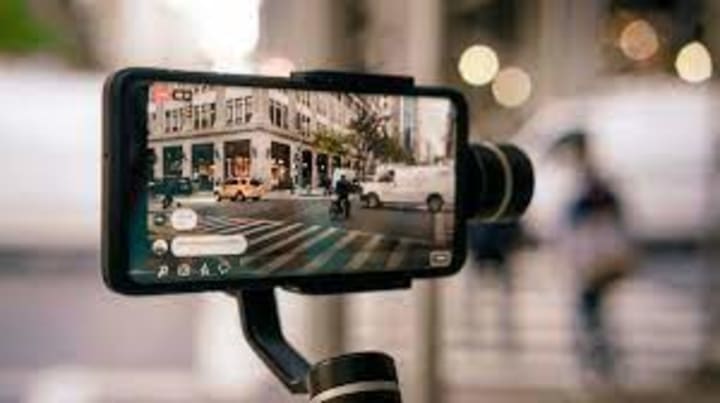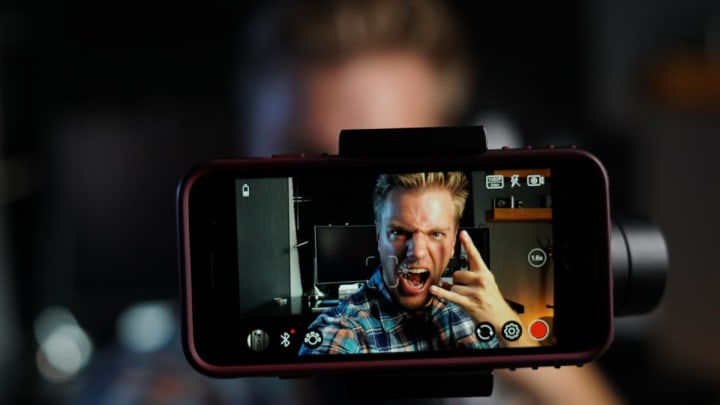5 Tips Captivating For Captivating SmartPhones Film making
Best Ideas

Introduction
Definition of smartphone filmmaking
Overview of the rise in popularity of smartphone filmmaking
Smartphone filmmaking refers to the process of creating films using a smartphone as the primary camera and editing tool. This type of filmmaking has become increasingly popular in recent years, due in part to the widespread availability of high-quality smartphones with advanced cameras and editing software. The portability and low cost of smartphones also make them an attractive option for filmmakers looking to create content on a budget.
However, despite the many benefits of smartphone filmmaking, it is not without its challenges. These challenges include limited control over camera settings, physical stability, and audio quality. In this article, we will explore the benefits and challenges of smartphone filmmaking, as well as techniques for overcoming these challenges and examples of successful smartphone films.

Benefits of smartphone filmmaking
Low cost
Portability
One of the main benefits of smartphone filmmaking is its low cost compared to traditional filmmaking methods. Smartphones are readily available and relatively inexpensive, making them an accessible option for aspiring filmmakers who may not have the budget for more expensive camera equipment. In addition, the availability of high-quality cameras and editing software on smartphones has made it easier for anyone to create professional-grade films.
Another benefit of smartphone filmmaking is its portability. Smartphones are small and easy to carry, making it easy to shoot on location and capture footage on the go. This is especially useful for documentary filmmakers or those looking to capture candid moments.
Finally, the availability of high-quality cameras and editing software on smartphones has made it possible for anyone to create professional-grade films. Many smartphones now come with advanced camera features such as high resolution, optical image stabilization, and the ability to shoot in RAW format, allowing for greater control and flexibility in post-production. In addition, there are a variety of editing apps available for smartphones that allow for advanced color grading and special effects.
Availability of high-quality cameras and editing software
III. Challenges of smartphone filmmaking
Limited control over camera settings
Limited physical stability
Limited audio quality
Limited lens options: Smartphones usually come with a fixed lens, which means you don't have the flexibility to change lenses for different shooting situations. This can make it difficult to achieve a specific look or focal length.
Poor low light performance: Many smartphones struggle to produce good quality footage in low light conditions. This can make it difficult to get usable footage in certain environments or at certain times of day.
Limited dynamic range: Smartphones often have limited dynamic range, which means they may struggle to capture both very bright and very dark areas of a scene in the same frame. This can result in blown out highlights or lost detail in shadows.
Limited color grading options: Most smartphones do not offer advanced color grading tools, which can make it difficult to achieve a specific look or match the color palette of other footage.
Limited storage: Many smartphones have limited storage capacity, which can be a problem for shoots that generate a lot of footage. You may need to invest in additional storage solutions or constantly offload footage to a computer.
IV. Techniques for overcoming challenges
Using external lenses and stabilizers
Using apps to control camera settings
Capturing high-quality audio with external microphones
Some additional techniques for overcoming challenges in photography and videography include:
Using a tripod or other stabilizing device to keep the camera steady and eliminate camera shake.
Using a lens hood to reduce lens flare and improve contrast.
Adjusting the white balance to better match the color temperature of the scene.
Using a reflector or flash to fill in shadows and add extra light to the scene.
Shooting in RAW format, which allows for greater flexibility in post-processing.
Experimenting with different compositions and framing to find the most visually appealing way to capture the scene.
Taking test shots and making adjustments before shooting the final image or video.
Using post-processing software to correct any imperfections or to add artistic effects to the final image or video.
V. Examples of successful smartphone films
"Tangerine"
"Unsane"
"Dinosaur 13"
"Tangerine" is a 2015 American comedy-drama film directed by Sean Baker and shot entirely on an iPhone 5S. The film follows a transgender sex worker who sets out to find the man who cheated on her. It was a critical and commercial success, and its use of smartphone technology was widely praised.
"Unsane" is a 2018 American psychological horror film directed by Steven Soderbergh and shot entirely on an iPhone 7 Plus. The film follows a young woman who is institutionalized against her will and begins to suspect that one of the staff members may be a former stalker. It received positive reviews and was a financial success.
"Dinosaur 13" is a 2014 documentary film directed by Todd Douglas Miller about the discovery of the largest and most complete Tyrannosaurus Rex fossil ever found. The film was shot on a variety of smartphones and other small cameras, and it received positive reviews for its visual style and compelling story.
Conclusion
Recap of the benefits and challenges of smartphone filmmaking
Future outlook for smartphone filmmaking
Smartphone filmmaking has a number of benefits, including the fact that smartphones are portable and easy to use, making it possible for anyone to create high-quality videos. In addition, smartphones have a variety of built-in features, such as high-resolution cameras, image stabilization, and a range of editing apps, that make it easy to capture and edit professional-quality video.
One of the main challenges of smartphone filmmaking is the limited control over camera settings, such as aperture and shutter speed. This can make it difficult to get the desired look and feel for a video, and may require the use of additional equipment or software to achieve the desired effect. In addition, the small size of smartphone cameras can make it difficult to get a shallow depth of field, which is often desired in video production.

Despite these challenges, smartphone filmmaking is becoming increasingly popular and is likely to continue to grow in popularity in the future. As smartphone technology continues to improve, it is likely that smartphones will become even more powerful tools for video production, making it possible for anyone to create high-quality videos with minimal equipment.






Comments
There are no comments for this story
Be the first to respond and start the conversation.